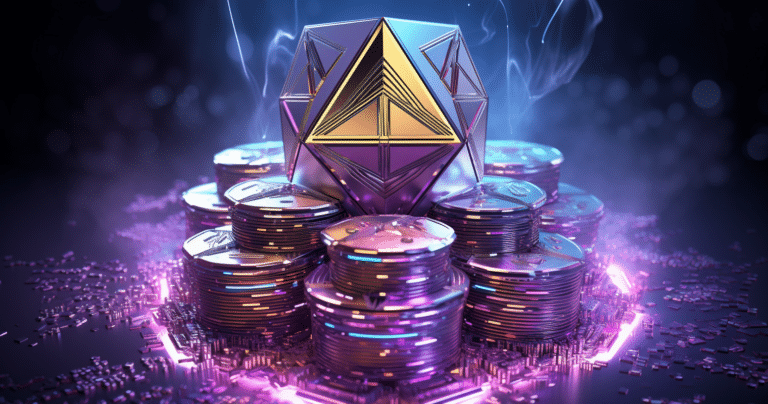Pulse of Information
Your source for the latest insights and updates.
ETH: The Wild Ride of Digital Gold
Discover the thrilling journey of ETH, the digital gold revolutionizing finance and shaping the future. Don't miss out on the ride!
Understanding Ethereum: What Makes It the Wild Ride of Digital Gold?
Ethereum has emerged as a powerful force in the digital currency landscape, often referred to as 'digital gold' due to its unique qualities that allow it to stand apart from traditional cryptocurrencies like Bitcoin. The native cryptocurrency, Ether (ETH), serves not only as a medium of exchange but also as a fundamental utility for transactions and operations within the Ethereum network. Unlike Bitcoin, which was designed solely as a digital currency, Ethereum supports smart contracts—self-executing contracts with the terms of the agreement directly written into code. This innovative feature has catalyzed a plethora of decentralized applications (dApps) and decentralized finance (DeFi) projects, making Ethereum the backbone of a new era of financial technology.
However, the ride with Ethereum can be exhilarating and tumultuous, reflecting the volatility characteristic of cryptocurrencies. As demand grows, so too do the complexities of transaction processing and network congestion, resulting in fluctuating gas fees that can affect user experience. Moreover, Ethereum's shift to a Proof of Stake (PoS) consensus mechanism in its major upgrade, known as Ethereum 2.0, has sparked discussions and debates about scalability, energy efficiency, and security. This transformation not only solidifies Ethereum's place in the digital gold narrative but also positions it as a continually evolving platform that promises significant rewards for those willing to embrace the risks that come with investing in such a dynamic ecosystem.

The Volatility of ETH: How it Compares to Traditional Gold
The volatility of ETH has been a topic of discussion among investors and analysts, especially when compared to traditional assets like gold. While gold is often perceived as a stable haven during economic uncertainty, Ethereum has displayed much more price fluctuation in recent years. For instance, in 2021, the price of ETH surged from around $730 to over $4,800, showcasing its potential for rapid gains. However, this also means that investors must navigate significant risks, as prices can sink just as quickly, reflecting a 60% drop within months. Such volatility can be attributed to a mix of market speculation, regulatory news, and technological developments within the Ethereum ecosystem.
In contrast, gold has maintained a relatively steady value over centuries, offering predictability that makes it an attractive choice for conservative investors. While both ETH and gold serve as stores of value, their behaviors in the market differ substantially. Gold's intrinsic value is supported by its utility in jewelry and electronics, along with its historic role as a hedge against inflation. On the other hand, Ethereum, with its underlying blockchain technology, attracts those seeking growth potential amidst the growing demand for decentralized finance (DeFi) and non-fungible tokens (NFTs). As such, the choice between investing in ETH or gold often boils down to an individual’s risk tolerance and investment strategy.
Ethereum Innovations: What Drives Its Wild Ride in the Crypto Market?
Ethereum has consistently demonstrated its capability to innovate, which is a key factor driving its significant fluctuations in the crypto market. One of the most notable innovations is the introduction of smart contracts, enabling developers to create decentralized applications (DApps) on the Ethereum blockchain. This not only enhances the platform's utility but also fosters an ecosystem that supports various projects and tokens, leading to increased demand and price volatility. Furthermore, periodic upgrades, such as the transition to Ethereum 2.0, which aims to improve scalability and reduce energy consumption, showcase the platform's commitment to evolution, thus captivating investor interest and contributing to its wild ride.
Another crucial element propelling Ethereum's ups and downs is the constant evolution of the DeFi (Decentralized Finance) sector. With projects offering lending, trading, and yield farming opportunities, Ethereum has become the backbone for a multitude of DeFi applications, attracting both retail and institutional investors. The excitement surrounding these innovations often creates a frenzy in the market, resulting in rapid price changes. As Ethereum continues to incorporate new features and capabilities, its position within the crypto market remains dynamic, making it essential for investors and enthusiasts to stay informed about ongoing developments.